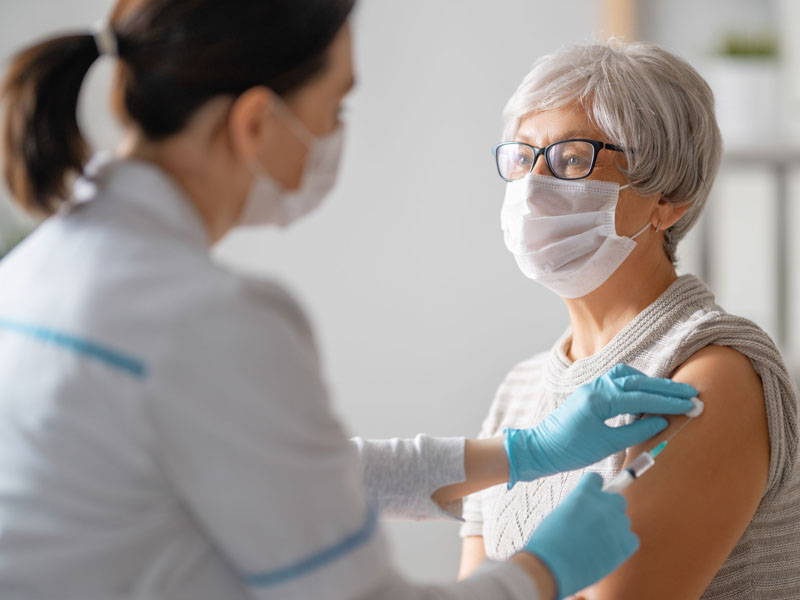PC Win: CMS Boosts Payment for At-home COVID-19 Vaccination
Higher Vaccine Administration Rate Targets 1.6 Million Homebound Patients
June 16, 2021, 4:07 p.m. Scott Wilson — Family physicians whose panels include patients facing barriers to obtaining office-based primary care heard good news from CMS earlier this month.

On June 9, the agency said that Medicare would pay an additional $35 per dose for at-home administration of COVID-19 vaccines (per home and when the vaccine is the visit’s sole reason). The increase pushes the total payment for each at-home vaccination dose from about $40 to about $75 and follows a March 15 Medicare payment increase for administration of each COVID-19 vaccine dose.
In announcing the move, CMS cited HHS data indicating that difficulty leaving home was preventing about 1.6 million U.S. adults age 65 or older from accessing COVID-19 vaccinations. Some 4 million Americans “have difficulty obtaining or are completely unable to access office-based primary care because they are frail, functionally limited and homebound,” according to research reported in a 2015 Health Affairs article.
Family physician Thomas Cornwell, M.D., of Schaumburg, Ill., — an expert on home-based primary care and founder and executive chairman of the Home Centered Care Institute — tells AAFP News he’s “thrilled” with the payment plan.
“It makes vaccinating the homebound more financially viable,” Cornwell explains. “March 15, the vaccine payment went up for everyone — office, mass-vaccination sites, etc. — from $17 to $40. These amounts were not enough to cover going to individual homes. The extra $35 will help.
“After each vaccination, there is a 15- to 30-minute waiting period. In mass-vaccination sites, nurses can observe up to 40 people at a time during this waiting period,” he adds. “For the homebound, not only is there the driving time, but you can only observe one patient and possibly some caregivers. And there are other logistical issues, such as the vaccine is only stable for six hours after the vial is punctured, so you have to get to five to 10 homes within that period to use all the doses.”
The payment boost recognizes what Cornwell, writing in the May-June issue of the FPM journal, has called a “resurgence” of home-based primary care dating to well before the public health emergency. He points to this uptick and HCCI’s advocacy as contributing factors to an overall positive federal response to seeing homebound patients through the pandemic — citing, for example, a CDC webpage devoted to vaccinating homebound patients that posted after he and several key HCCI partners offered input to the agency.
“I was part of a national webinar with the CDC’s (National Center for Immunization and Respiratory Diseases) chief medical officer, Amanda Cohn, M.D., specifically on vaccinating the homebound,” Cornwell notes. (Trust for America’s Health, a nonpartisan public health policy, research and advocacy organization that hosted that webinar, recently issued a report on the topic.)
Cornwell, who also is senior medical director at Village Medical at Home of Village MD, a value-based primary care organization that focuses on keeping patients in their homes, says the Medicare increase is an important acknowledgment of his patients’ special needs.
“The second reason I’m thrilled with the increase is that it means the ‘invisible homebound’ are becoming more visible, which is a health equity issue,” he says. “Prior to home-based primary care, the sickest patients in society, the homebound, had no access to primary care — and they need it the most.”